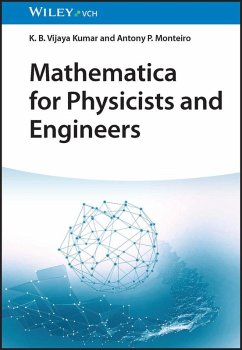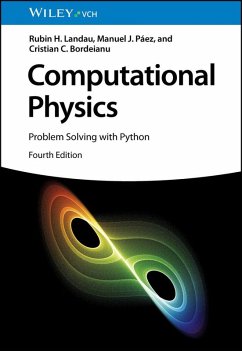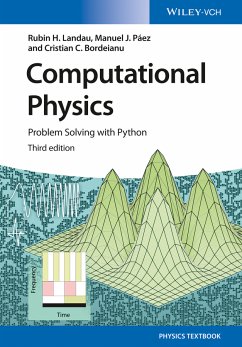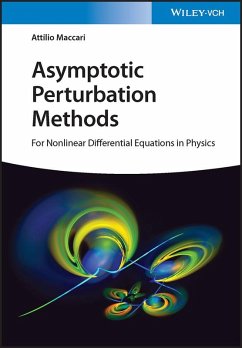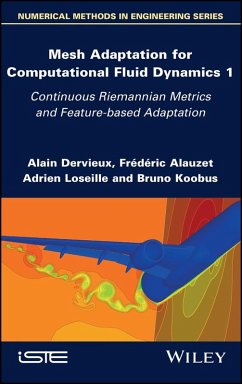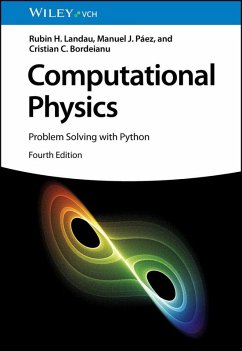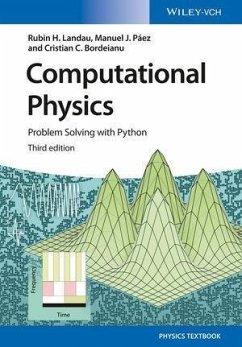
Mathematica for Physicists and Engineers (eBook, ePUB)
Versandkostenfrei!
Sofort per Download lieferbar
75,99 €
inkl. MwSt.
Weitere Ausgaben:

PAYBACK Punkte
0 °P sammeln!
Mathematica for Physicists and EngineersHands-on textbook for learning how to use Mathematica to solve real-life problems in physics and engineeringMathematica for Physicists and Engineers provides the basic concepts of Mathematica for scientists and engineers, highlights Mathematica's several built-in functions, demonstrates mathematical concepts that can be employed to solve problems in physics and engineering, and addresses problems in basic arithmetic to more advanced topics such as quantum mechanics.The text views mathematics and physics through the eye of computer programming, fulfilling...
Mathematica for Physicists and Engineers
Hands-on textbook for learning how to use Mathematica to solve real-life problems in physics and engineering
Mathematica for Physicists and Engineers provides the basic concepts of Mathematica for scientists and engineers, highlights Mathematica's several built-in functions, demonstrates mathematical concepts that can be employed to solve problems in physics and engineering, and addresses problems in basic arithmetic to more advanced topics such as quantum mechanics.
The text views mathematics and physics through the eye of computer programming, fulfilling the needs of students at master's levels and researchers from a physics and engineering background and bridging the gap between the elementary books written on Mathematica and the reference books written for advanced users.
Mathematica for Physicists and Engineers contains information on:
Serving as a complete first course in Mathematica to solve problems in science and engineering, Mathematica for Physicists and Engineers is an essential learning resource for students in physics and engineering, master's students in material sciences, geology, biological sciences theoretical chemists. Also lecturers in these and related subjects will benefit from the book.
Hands-on textbook for learning how to use Mathematica to solve real-life problems in physics and engineering
Mathematica for Physicists and Engineers provides the basic concepts of Mathematica for scientists and engineers, highlights Mathematica's several built-in functions, demonstrates mathematical concepts that can be employed to solve problems in physics and engineering, and addresses problems in basic arithmetic to more advanced topics such as quantum mechanics.
The text views mathematics and physics through the eye of computer programming, fulfilling the needs of students at master's levels and researchers from a physics and engineering background and bridging the gap between the elementary books written on Mathematica and the reference books written for advanced users.
Mathematica for Physicists and Engineers contains information on:
- Basics to Mathematica, its nomenclature and programming language, and possibilities for graphic output
- Vector calculus, solving real, complex and matrix equations and systems of equations, and solving quantum mechanical problems in infinite-dimensional linear vector spaces
- Differential and integral calculus in one and more dimensions and the powerful but elusive Dirac Delta function
- Fourier and Laplace transform, two integral transformations that are instrumental in many fields of physics and engineering for the solution of ordinary and partial differential equations
Serving as a complete first course in Mathematica to solve problems in science and engineering, Mathematica for Physicists and Engineers is an essential learning resource for students in physics and engineering, master's students in material sciences, geology, biological sciences theoretical chemists. Also lecturers in these and related subjects will benefit from the book.
Dieser Download kann aus rechtlichen Gründen nur mit Rechnungsadresse in D ausgeliefert werden.




